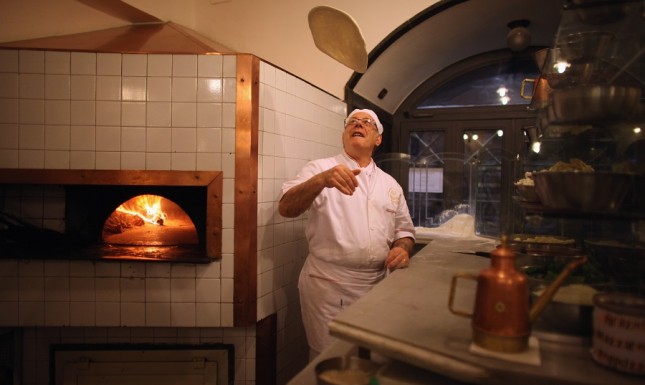Franchising, retail, business

10/07/2015
Pizza, pasta and ragù are a must for Neapolitan tables.
The Mediterranean Diet, which is now recommended by nutritionists all over the world, has been eaten by the Neapolitans since ever. However, they have always been unaware of the fact. Indeed the food on their tables has never been the result of trying to balance proteins and carbohydrates, but the result of what was available in the family and whatever could be bought cheaply at the market. Campania‘s coockery is thus based on humble ingredients, with little use of meat, but vibrant with flavours and colours.
Any discussion of Neapolitan cooking is bound to involve a celebration of its most famous dish, which more than any other has introduced the taste and simplicity of southern Italian food to the rest of the world: pizza. Pizza was invented by the local people in their constant search for a cheap way to satisfy their hunger, and corresponded perfectly to their needs, being simple to prepare, but at the same time filling and nutritious. It started life as a simple disc of dough scattered with mozzarella and flavoured with oil and garlic; the only dressing was probably a handful of seafood. Then tomatoes arrived from America and the pizza assumed the form we know today. It slowly became a dish of mass consumption, and was successfully exported beyond the region’s confines.
Another linchpin of Neapolitan cookery is pasta. Local creativity has led to an incredible variety of pasta shapes with fantastic names: vermicelli, fusilli, tortiglioni rigatoni spaghetti, ziti, maccheroni, to metion but a few. There is also a vast range of sauces and dressings served with pasta. The simplest are perhaps also the best, and a plate of spaghetti served with tomato and fragrant basil is a delight on a par with any sophisticated rich sauce.
An exception to the Neapolitan simplicity in food preparation is ragù, or to use its full name, ragù del guardiaporta (porter’s ragù). The name of this wonderful dish originates from the fact that it takes a long time to cook and also requires constant supervision – it was supposed that only porters, with their mainly sedentary and relaxed way of spending the working day, had the necessary time available to prepare it. Ragù is hearty, substantial dish, and constitutes a meal in itself. In this elaborate recipe, slices of veal are rolled up and staffed with cheese, parsley, garlic, pine nuts and sultans. The rolls are then cooked with fat, tomatoes and red wine. The sauce thus obtained is used to dress the pasta, while the meat rolls are served as the main course.
Fonte:http://www.thisisitaly-panorama.com/italy-today/the-secrets-of-campanias-cuisine/